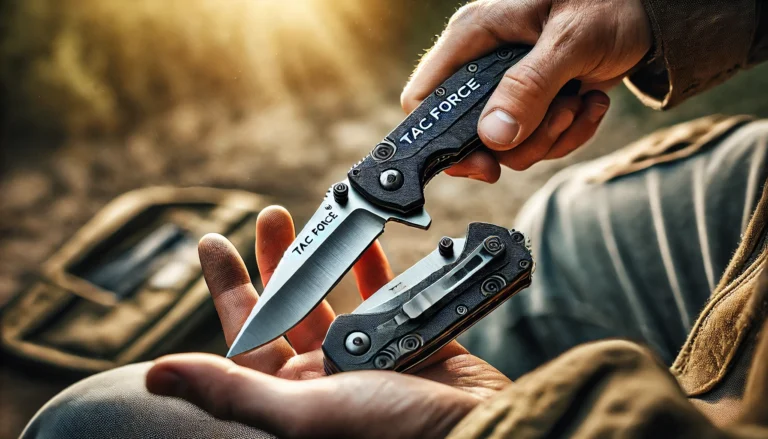
In the world of cooking, knives are essential tools that must be meticulously maintained to ensure efficiency, safety, and hygiene. Knowing when a knife should be cleaned and sanitized is especially important for chefs and kitchen enthusiasts who prioritize hygiene and food safety. This guide offers insights into the importance of knife hygiene, signs indicating when a knife needs cleaning, and effective methods.
When was the Knife Cleaned and Sanitized? (Short Answer)
Knives should be cleaned and sanitized after cutting raw meat, fish, or poultry to prevent cross-contamination. They should also be cleaned after chopping fruits and vegetables, especially those with dirt. Cleaning is necessary after slicing bread to avoid crumbs and residue buildup. Additionally, knives should be sanitized if they touch surfaces that might have bacteria on them. Lastly, always clean your knife at the end of each cooking session.
The Importance of Cleaning and Sanitizing Knives
Ensuring Food Safety
Dirty knives can harbor harmful bacteria and cross-contaminate foods, leading to foodborne illnesses. Proper cleaning and sanitizing eliminate these risks, ensuring the food you prepare is safe.
Maintaining Knife Quality
Regular cleaning prevents rust and corrosion, prolonging the life of your knives. Well-maintained knives remain sharper longer, reducing the need for frequent sharpening and providing a better cutting experience.
Professional Standards
Adhering to strict hygiene standards is non-negotiable for professional chefs. Clean and sanitized knives are fundamental to maintaining a reputable kitchen and complying with health regulations.
When Should You Clean Your Knife?
After Each Use
The safest practice is to clean your knife immediately after each use. This habit prevents food residues from hardening, making cleaning easier and reducing the risk of bacterial growth. Whether chopping vegetables or slicing meat, a quick clean goes a long way.
Between Different Foods
When preparing different types of food, especially raw meat, poultry, and seafood, cleaning your knife in between uses is critical. This step prevents cross-contamination and ensures that distinct flavors do not mix unintentionally.
After Cutting Raw Meat, Poultry, or Seafood
Raw animal products can carry bacteria like Salmonella and E. coli. Therefore, knives should be cleaned and thoroughly sanitized after cutting such items before being used on other foods.
When Your Knife Looks or Feels Dirty
Sometimes, you might notice food particles or a greasy feel on your knife, even if you’ve only used it for one type of food. In such cases, it is best to clean the knife immediately to keep it in optimal condition.
How to Properly Clean and Sanitize Your Knife
Step-by-Step Cleaning Process
- Rinse Immediately:
Rinse the knife under warm running water to remove loose food particles. Avoid soaking the knife, as prolonged exposure to water can damage the handle and blade.
- Use Mild Detergent:
Apply a small amount of mild dish soap to a soft sponge or cloth. Harsh chemicals can corrode the blade and weaken the knife over time.
- Scrub Gently:
Gently scrub the blade, handle, and crevices to remove food residues. Pay special attention to the area where the blade meets the handle.
- Rinse Thoroughly:
Rinse off all soap residues under warm running water. Any leftover soap can affect the taste of food and potentially cause corrosion.
- Dry Immediately:
Use a clean cloth to wipe the knife completely dry. Moisture can lead to rust, especially in high-carbon steel knives.
Effective Sanitization Methods
- Sanitizing Solution:
Prepare a sanitizing solution. Mix one tablespoon of unscented liquid chlorine bleach with one gallon of water. Soak the knife in the solution for about one minute.
- Boiling Water:
For a more immediate method, immerse the knife in boiling water for at least one minute. Be cautious to avoid burns.
- Commercial Sanitizers:
Use foo-safe commercial sanitizing sprays or wipes designed for kitchen utensils for best results. Follow the manufacturer’s instructions.
- UV Sanitizers:
Some kitchens use UV light sanitizers, which can effectively kill bacteria without chemicals. These devices are more common in professional settings.
Best Practices for Kife Hygiene
Regular Inspection
Regularly inspect your knives for wear, rust, or damage. Keeping an eye on the condition of your knives ensures they remain safe and effective for use.
Proper Storage
Store knives in a knife block, magnetic strip, or protective sheath to prevent them from contacting other utensils. This prevents contamination and damage to the blades.
Avoiding Dishwashers
Never place knives in the dishwasher. The high heat and harsh detergents can damage the blade and handle. Hand washing is always the preferred method for maintaining knife quality.
E educate Kitchen Staff.
In a professional kitchen, ensure all staff members know the importance of cleaning and sanitizing knives. Consistency in this practice is critical to maintaining overall kitchen hygiene.
Conclusion:
Maintaining the cleanliness and sanitation of your knives is not just about keeping them sharp and efficient; it’s crucial for ensuring food safety and preventing cross-contamination. You can provide a safe and productive kitchen environment by following the guidelines outlined in this article—cleaning knives after each use, sanitizing them after handling raw meats, and using proper cleaning techniques. Adopting these practices for both professional chefs and home cooks will help maintain the integrity of your tools and the quality of your culinary creations.
FAQs
Cleaning your knife immediately after each use prevents food residues from hardening the blade, making cleaning easier and lowering the chance of bacteria growing.
Yes, cleaning your knife between cutting different types of food is essential to prevent cross-contamination, especially when switching between raw meats and vegetables.
If your knife looks dirty or feels greasy while cooking, stop and clean it immediately to maintain food safety and the knife’s cutting efficiency.
After cutting raw meat, thoroughly clean the knife with soap and water and sanitize it to remove harmful bacteria.
No, it would help if you always cleaned your knife before sanitizing it. Cleaning removes food particles and residue, while sanitizing kills bacteria that may be left on the blade.
You should clean and sanitize a knife after each use, especially after cutting raw meat or seafood. Always clean between cutting different foods to avoid contamination. If the nife looks dirty while cooking, clean it right away.
You must clean and sanitize your knife and cutting board after every use, significantly if you’re cutting raw meat or fish. Always wash them when switching between different types of food. Clean and s sanitize them immediately if they look dirty while you’re cooking.
Tools should be cleaned and sanitized after each use to remove food residues and bacteria. They should also be cleaned when switching between different types of food. If the tools become dirty during cooking, they should be cleaned immediately.





